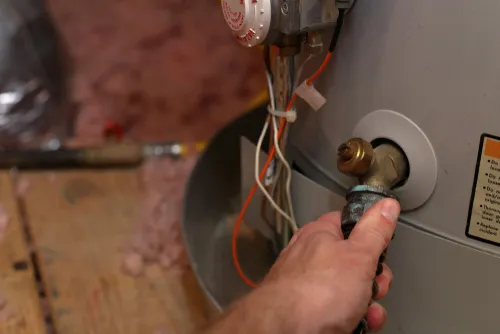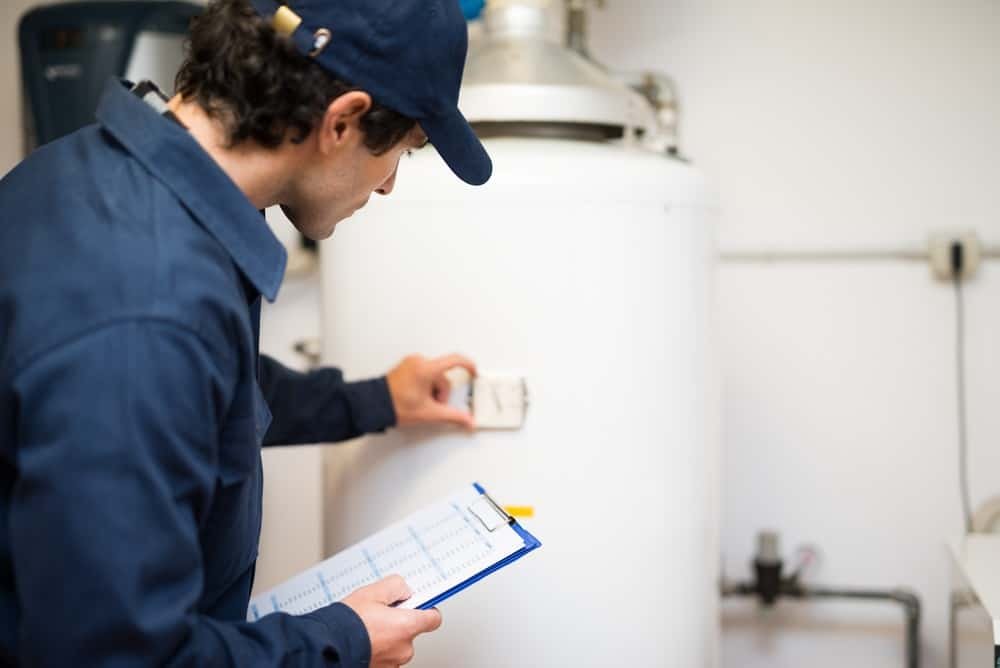In the realm of water heaters, the issue of sediment buildup poses a critical challenge, notably in the historical context of Alhambra. As water circulates through the system, minerals and debris gradually settle at the bottom, forming sediment that hampers heat transfer efficiency. Alhambra’s intricate architecture and historic water systems further amplify this concern. This introduction The Pro Plumbing highlights the significance of comprehending sediment accumulation in Alhambra’s water heaters, emphasizing the need for proactive measures to mitigate its adverse effects on energy efficiency and the overall functionality of these essential components within this iconic cultural heritage site.
Historical Context:
In the historical context of Alhambra, the presence of sediment buildup in water heaters unveils a unique set of challenges reflective of the site’s rich cultural heritage. As a testament to centuries of architectural prowess and water management systems, Alhambra’s intricate structures contribute to the accumulation of minerals and debris within its water heaters. The historical significance amplifies the importance of comprehending and addressing sediment-related issues, as the preservation of this iconic site demands a delicate balance between maintaining the authenticity of its infrastructure and ensuring the efficient functioning of contemporary utilities. Recognizing the historical context emphasizes the need for tailored solutions that not only uphold the structural integrity of Alhambra but also safeguard its cultural legacy.
Mineral Accumulation:
Mineral accumulation poses a significant concern in Alhambra’s water heaters, with minerals settling at the system’s bottom, predominantly sourced from the local water supply. This accumulation threatens operational efficiency and, over time, forms sediment that hampers heat transfer. In the context of Alhambra’s historical water systems, where intricate architecture and ancient conduits interact with local mineral-rich water, understanding and addressing mineral accumulation are paramount. Acknowledging this challenge enables the implementation of measures to mitigate its impact, ensuring sustained functionality. Adhering to water heater installation guidelines becomes crucial for optimizing performance within Alhambra’s unique historical setting.

Architectural Impact:
The architectural impact of sediment buildup in Alhambra’s water heaters is notable, as the intricate and historical design of this cultural heritage site intertwines with the challenges posed by mineral accumulation. Alhambra’s unique architecture, characterized by ornate details and ancient conduits, plays a pivotal role in contributing to sediment-related concerns. The presence of mineral-rich water circulating through these systems can lead to the formation of deposits, affecting the efficiency of water heaters. Addressing the architectural impact of sediment buildup becomes imperative, as it requires solutions that not only respect the historical integrity of Alhambra’s structures but also accommodate the contemporary need for efficient and sustainable water heating systems within this iconic setting.
Efficiency Impairment:
- Reduced Heat Transfer: Sediment buildup in Alhambra’s water heaters diminishes the efficiency of heat transfer, as the accumulated minerals act as insulating layers, impeding the heating elements’ ability to effectively warm the water.
- Increased Energy Consumption: The impaired heat transfer necessitates higher energy consumption to achieve desired water temperatures, leading to increased operational costs and environmental impact.
- Potential Equipment Damage: Prolonged sediment accumulation may result in scaling on heating elements, causing potential damage to the water heater and requiring costly repairs or replacements.
- Inconsistent Heating: Sediment-related efficiency impairment can result in inconsistent water heating, impacting the reliability of hot water supply throughout Alhambra’s infrastructure.
- Decreased Lifespan: The strain on water heaters from sediment buildup can shorten their lifespan, requiring more frequent replacements and maintenance, thereby increasing overall costs.
Proactive Measures:
Implementing proactive measures to address sediment buildup in Alhambra’s water heaters is imperative for preserving the efficiency and longevity of these crucial systems. Regular maintenance schedules, including flushing and cleaning procedures, can help prevent the gradual accumulation of minerals and debris. Installing sediment filters at key entry points in the water supply system can serve as an initial line of defense, reducing the influx of particles into the heaters. Additionally, the incorporation of water softening technologies can mitigate the impact of hard water, minimizing mineral deposits and sediment formation. A comprehensive awareness and education program for maintenance staff and residents further contribute to the success of these proactive measures, ensuring a sustained and reliable operation of water heaters within the historical context of Alhambra. Identifying and fixing water heater pressure relief issues becomes integral to this comprehensive approach.

Preserving Functionality:
Preserving the functionality of water heaters in Alhambra is paramount, given the historical and cultural significance of this iconic site. Effective measures to address sediment buildup are essential to ensure the seamless operation of these systems. Regular inspections, routine maintenance, and the timely removal of accumulated sediment play a crucial role in sustaining the heaters’ efficiency and performance. Proactively addressing mineral accumulation not only prevents potential damage to the heating elements but also guarantees a consistent and reliable hot water supply throughout Alhambra’s intricate infrastructure. By preserving the functionality of water heaters, Alhambra can maintain the delicate balance between historical preservation and contemporary utility needs, offering both residents and visitors an authentic experience while enjoying the benefits of efficient and dependable water heating systems.
Scaling Impact:
The scaling impact arising from sediment buildup in Alhambra’s water heaters is a critical aspect that influences their efficiency and long-term functionality. As minerals accumulate within the heating elements, scaling occurs, forming a layer that impedes heat transfer. This phenomenon not only diminishes the heaters’ effectiveness in warming water but also necessitates increased energy consumption to achieve desired temperatures. The scaling impact poses a risk of potential damage to the heating elements, requiring costly repairs or replacements. Mitigating this scaling effect becomes imperative for preserving the operational integrity of water heaters, ensuring sustained efficiency, and minimizing the environmental footprint associated with excessive energy consumption within the historical and architectural context of Alhambra. The proper installation of a water heater timer is crucial as part of an effective strategy to address scaling and enhance energy efficiency.
Historic Preservation:
- Cultural Sensitivity: Addressing sediment buildup in water heaters aligns with the cultural sensitivity required for preserving Alhambra’s historical significance.
- Preventing Structural Damage: Proactively managing sediment helps prevent potential damage to the historical structures and architectural elements connected to the water heating systems.
- Artifact Conservation: Preserving the functionality of water heaters is crucial for preventing corrosion and scaling that could negatively impact artifacts and ancient conduits within Alhambra.
- Authentic Experience: Ensuring efficient water heating systems allows residents and visitors to experience the historical site authentically, without disruptions or compromises to its unique charm.
- Maintaining Aesthetic Appeal: Proactive measures contribute to the aesthetic appeal of Alhambra by preventing potential visual and structural damage caused by sediment accumulation.
- Balancing Modern Needs: Preserving historic sites like Alhambra requires a delicate balance between modern utility needs and the conservation of architectural and cultural heritage. Addressing sediment buildup plays a crucial role in striking this balance.

Water Quality Concerns:
Water quality concerns associated with sediment buildup in Alhambra’s water heaters are multifaceted and demand careful consideration. The accumulation of minerals and debris can result in compromised water quality, affecting taste and clarity. Addressing these concerns is crucial not only for maintaining the aesthetic attributes of the water but also for ensuring the safety and satisfaction of residents and visitors. By implementing proactive measures to manage sediment, Alhambra can uphold a consistent and high standard of water quality. This not only aligns with the preservation of its historical and cultural significance but also contributes to the overall well-being and contentment of those who interact with the water supply within this iconic site, emphasizing the importance of professional water heater repair services to uphold these standards.
FAQ’s:
Why is there sediment in my hot water heater?
Sediment accumulates in hot water heaters due to minerals and debris settling at the bottom of the tank, impeding heat transfer efficiency.
What are the deposits in my water heater?
The deposits in your water heater are typically minerals, sediment, and debris that settle at the tank’s bottom over time, compromising efficiency.
What is the jelly sediment in my water heater?
The jelly-like sediment in your water heater is often a combination of minerals, scale, and corrosion byproducts that can accumulate and hinder the appliance’s performance.
Is sediment in water heater harmful?
While not harmful for consumption, sediment in a water heater can impair efficiency, increase energy consumption, and potentially lead to equipment damage over time.
Where does water heater sediment come from?
Water heater sediment originates from minerals and debris present in the water supply, settling at the bottom of the tank during heating and cooling cycles.
CONCLUSION:
In conclusion, comprehending sediment buildup in Alhambra’s water heaters is essential for maintaining the efficiency and functionality of these crucial systems within a historically significant setting. Recognizing the impact of mineral accumulation on heat transfer efficiency, energy consumption, and potential structural damage underscores the importance of proactive measures. By implementing regular maintenance, incorporating sediment filters, and promoting water softening technologies, Alhambra can preserve the delicate balance between historical preservation and contemporary utility needs. Such efforts not only ensure a consistent and reliable hot water supply but also contribute to the long-term sustainability of this iconic cultural heritage site.





